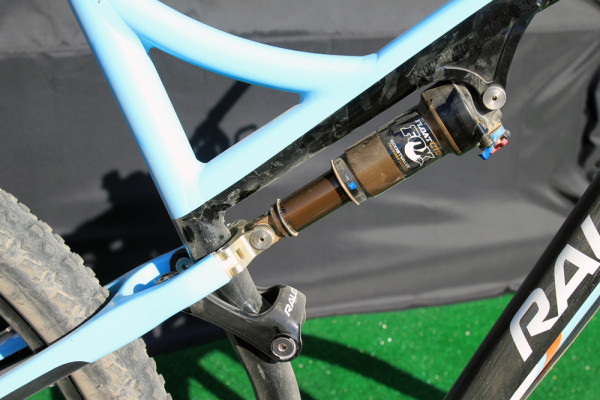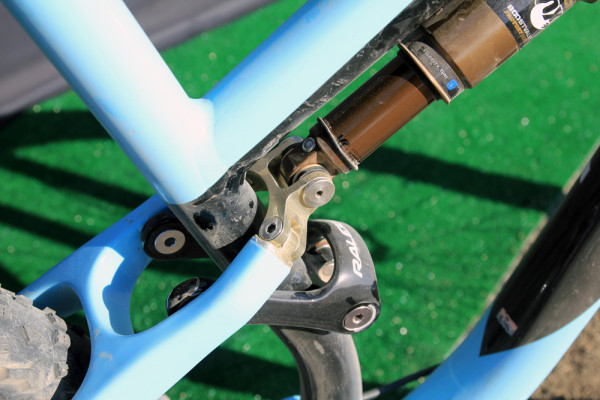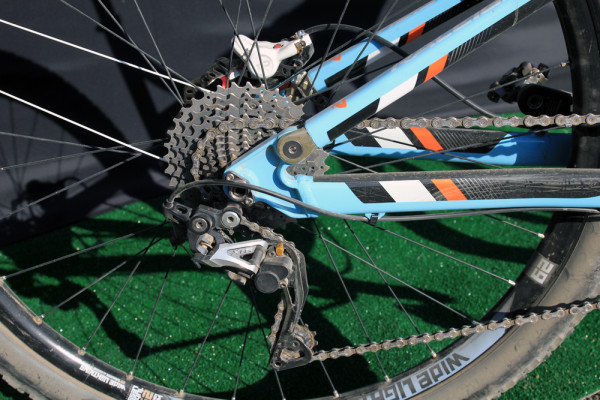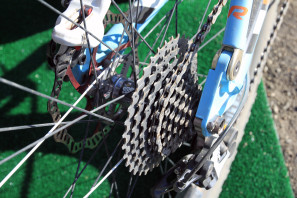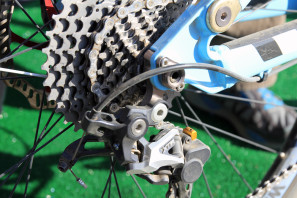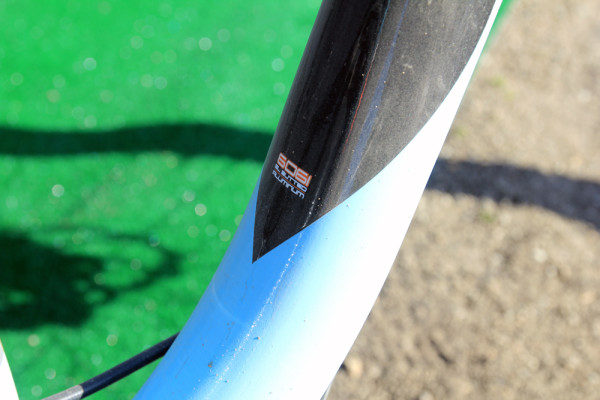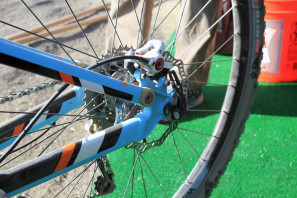It’s been a while since Raleigh has offered a full suspension bike. But with the brand’s resurgence of the past few years, and pumping out awesome bikes, Raleigh is ready to take another crack at it with their new prototype 29er full suspension. Currently in development and being tested with the Raleigh Clement racing team, the Gulf Racing colored fully shows a lot of promise for Raleigh’s future in mountain biking…
Like most frame manufacturers, Raleigh worked closely with Fox to develop a suspension platform that was perfectly tuned based on the shocks available through Fox. Currently using the 2nd oversized air can, the bike offers 100mm front and rear travel.
After testing multiple designs for the suspension arch where it connects to the shock, they settled on this design as it tested much better. While the piece adds 30g to the design, it results in an impressive 15% increase in lateral stiffness. All of the suspension bearings will be ABI Enduro Max bearings with a Black Oxide coating for corrosion resistance. However, the bearings will be standard size so in a pinch you could replace one with an off the shelf part. Bearing selection was more than just picking the sizes off the chart, as Raleigh provided the actual load numbers to Matt Harvey from ABI to select the perfect bearing suited to each pivot.
At the rear is a 142x12mm thru axle, but it has a trick up its sleeve. You may have come across a rear thru axle that wasn’t perfectly aligned which makes the axle hard to get in and out or worse – damages it. To address the issue and ensure perfect alignment, Raleigh’s designer Mark Landsaat created a system where you loosen the driveside hanger, then thread the axle into the frame. That positions the hanger exactly where it needs to be, and you tighten the hanger down for perfect alignment every time.
Using an aluminum main frame and chainstay, the prototype 29er uses a carbon link and carbon seat stay to complete the package. Other frame specs include the traditional tapered head tube, and 73mm threaded bottom bracket.
The front derailleur uses a low direct mount that rides on the swingarm for improved shifting through the travel. Currently the bike as shown sits just over 25 lbs as Jamey Driscoll of the Raleigh Clement team rode it in the Sea Otter XC race. This bike is still very much a prototype with a number of cnc machined parts, but the pilot run of production samples is starting now, with full production expected later this summer. Final availability is expected by Interbike.

